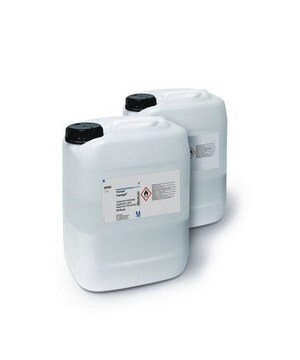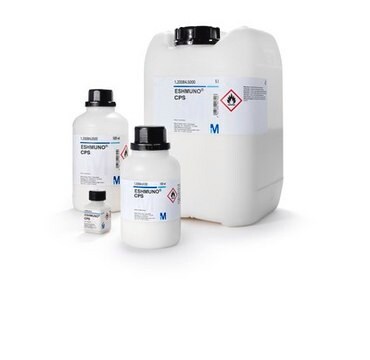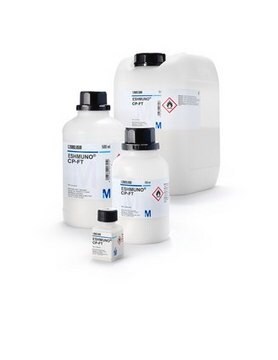おすすめの製品
ligand
(Sulfoisobutyl)
品質水準
100
400
詳細
strong cation exchanger, suspension in 20% ethanol and 150 mM NaCl (20-40 µm)
無菌性
sterile (Caustic Stable)
アッセイ
≥90% (HPLC)
形状
resin
メーカー/製品名
Calbiochem®
パラメーター
8 bar max. pressure
80 cm/hr flow rate
マトリックス活性基
methacrylate
平均粒径
20-40 um μm
キャパシティ
150 mg binding capacity (lysozyme/ml of resin)
転移温度
flash point 35 °C (Does not sustain combustion.)
密度
1.43 g/cm3 at 20 °C
かさ密度
1000 kg/m3
分離法
strong cation exchange
輸送温度
ambient
保管温度
2-8°C
類似した製品をお探しですか? 訪問 製品比較ガイド
包装
- 1.16882.0100: Fractogel® EMD SO3- (S) Resin 100ml
- 1.16882.0010: Fractogel® EMD SO3- (S) Resin 10ml
- 1.16882.0500: Fractogel® EMD SO3- (S) Resin 500ml
- 1.16882.5000: Fractogel® EMD SO3- (S) Resin 5L
警告
アナリシスノート
Microscopic evaluation: Uniform spherical particles,no agglomerates,no fines
Extractable matter (water): ≤ 0.05 %
Cerium: ≤ 10 µg/g
Pressure drop(column: ID=1.6 cm, L=10 cm at 5 ml/min): ≤ 5.0 bar
Particle size (d10): 20 - 28 µm
Particle size (d50): 24 - 34 µm
Particle size (d90): 28 - 38 µm
Colony forming units (TAMC + TYMC): ≤ 100 CFU/ml
Endotoxins: ≤ 1.00 EU/ml
Protein binding capacity (lysozyme): 120 - 180 mg/ml
Functional test (c:d): ≤ 0.15
Functional test (b:a): ≤ 0.15
Functional test: Separation chymotrypsinogen A, cytochrom C and lysozyme
法的情報
シグナルワード
Warning
危険有害性情報
危険有害性の分類
Flam. Liq. 3
保管分類コード
3 - Flammable liquids
WGK
WGK 1
引火点(°F)
95.0 °F
引火点(℃)
35 °C
適用法令
試験研究用途を考慮した関連法令を主に挙げております。化学物質以外については、一部の情報のみ提供しています。 製品を安全かつ合法的に使用することは、使用者の義務です。最新情報により修正される場合があります。WEBの反映には時間を要することがあるため、適宜SDSをご参照ください。
消防法
第4類:引火性液体
第二石油類
危険等級III
非水溶性液体
労働安全衛生法名称等を表示すべき危険物及び有害物
名称等を表示すべき危険物及び有害物
労働安全衛生法名称等を通知すべき危険物及び有害物
名称等を通知すべき危険物及び有害物
試験成績書(COA)
製品のロット番号・バッチ番号を入力して、試験成績書(COA) を検索できます。ロット番号・バッチ番号は、製品ラベルに「Lot」または「Batch」に続いて記載されています。
ライフサイエンス、有機合成、材料科学、クロマトグラフィー、分析など、あらゆる分野の研究に経験のあるメンバーがおります。.
製品に関するお問い合わせはこちら(テクニカルサービス)



